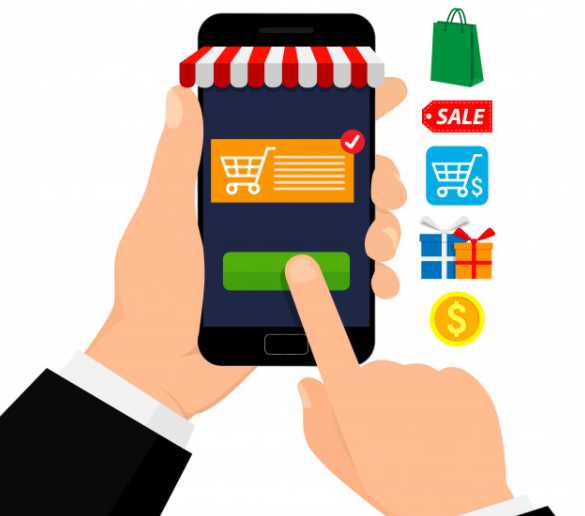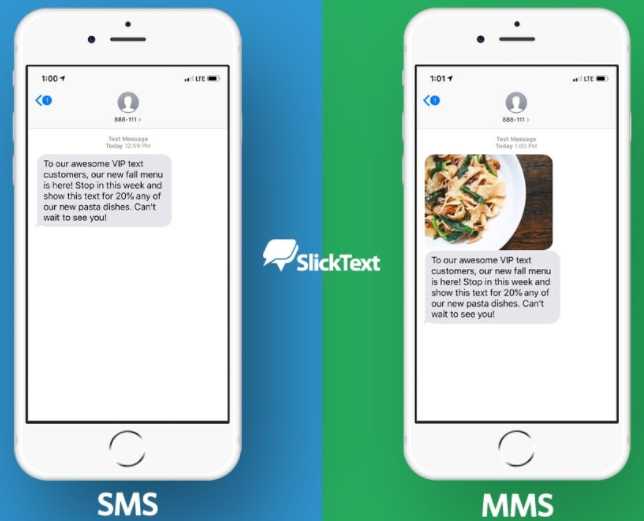Table of Content
Technology has changed our lives and daily habits in unimaginable ways. Smartphones have advanced in ways Dr Martin Cooper would never have envisioned when he made the first call on a mobile phone device in 1973. Since then, mobile phones have become lighter, more portable and more affordable for the general population, becoming part and parcel of daily human interaction.
 Mobile marketing. Image Credit: freepik.com
Mobile marketing. Image Credit: freepik.com
A testament to this is the estimated 3 billion smartphone users, with China, India, and the USA maintaining the bulk of these smartphone users, with a combined 1.46 billion users. The smartphone revolution has additionally given rise to a new form of marketing which will be the topic of this discussion.
 Smartphone users worldwide 2016-2023. Image Credit: statista.com
Smartphone users worldwide 2016-2023. Image Credit: statista.com
What Is Mobile Marketing?
In simple terms, mobile marketing is a marketing vertical that promotes services and products through mobile devices, such as tablets and smartphones. As a science and an art of marketing, mobile marketing is a multi-channel approach that focuses on virtual advertising techniques geared towards audiences that use smartphones and tablets through websites, social media, email, mobile apps, SMS and MMS.
Why is Mobile Marketing Becoming Increasingly Important?
According to Statista, mobile advertising spending is expected to exceed $240 billion by 2022. Statista also reported that 94% of Facebook’s ad revenue is generated through mobile devices. Furthermore, according to PWC research, more than 51% of consumers search for brands on their mobile phones. A 2020 Ofcom UK benchmark report also revealed that in the UK alone, over three-quarters of time spent online is spent on smart devices.
 Facebook’s global revenue as of 1st quarter 2021. Image Credit: statista.com
Facebook’s global revenue as of 1st quarter 2021. Image Credit: statista.com
All these statistics spell good things for mobile marketing and hint towards its importance and emergence in the digital marketplace. The stats shown above clearly demonstrate that mobile usage is widely prevalent; as such, mobile marketing can no longer be ignored. More so, since approx. 80% of internet users utilise smartphones for online shopping. The reasons why mobile marketing is becoming so important are pretty simple:
- It is affordable and offers better value that circumvents the printing costs of traditional marketing channels. Since not all small business owners have a lot of money to market their businesses, mobile marketing offers a less expensive option than other forms of digital marketing as it is multi-channel marketing.
- It is widely distributed as marketers can easily reach multiple people all over the globe simultaneously, at any time — at work, home, or even on vacation.
- Ads can be easily personalised, targeted and adjusted to speak directly to one person, based on purchase history or location.
- Instant and immediate communication that can be delivered to the potential recipients within seconds.
- It’s highly flexible, making it easy to incorporate innovative promotional tools with existing ones to boost their effectiveness, efficacy and interactivity.
- Mobile marketing is easily quantifiable and measurable since data can be easily monitored via digital tools.
- Mobile marketing has a lot of viral potential as messages can be easily shared by the customers, which increases the potential of reaching new customers, at no cost.
- It gives many new businesses a competitive edge as new players in the market can exploit it to establish themselves as leaders in their own sector.
Key Mobile Marketing Channels
1. Mobile Applications
Currently, mobile applications are the main medium for mobile marketing, particularly on smartphones or tablet computers. Mobile apps can be used to build customer engagement and loyalty for all types of businesses and organisations. Mobile apps typically host the same banner and search ads usually seen on desktop computers, but optimised for mobile.
Mobile games fall within mobile applications and are a great avenue for advertising, with pop-up ads, banners, and video ads appearing while users play.
2. SMS (Text Message Marketing)
Short Message Service (SMS) is a mobile marketing channel that enables marketers to send text short, time-sensitive messages to customers with promotional information like offers. Text messages dominated the mobile marketing space initially and are still a very effective way of getting to a targeted audience.
 How SMSs work. Image Credit: althos.com
How SMSs work. Image Credit: althos.com
Aside from having very high open rates compared to other communication channels, SMSs can be read on ordinary cellphones and smartphones. They can also be utilised to generate leads if the business name or personal name is mentioned for additional information.
3. MMS
On the other side of text-based communication, we have MMS, a more visual version of SMS. An MMS is a multimedia message service that contains media items like images, video, or audio, sent via mobile devices.
 The difference between MMS and SMS. Image credit: slicktext.com
The difference between MMS and SMS. Image credit: slicktext.com
Since videos are very engaging and tend to draw attention, MMS is still applicable in today’s marketplace.
4. Bluetooth Proximity Marketing
Bluetooth Proximity Marketing employs Bluetooth tech to push messages to people in specific locations. For example, a customer walking through a garden centre at Home Depot, then receiving a message about the best plant specials of the day.
 How Bluetooth proximity marketing works. Image Credit: medium.com
How Bluetooth proximity marketing works. Image Credit: medium.com
With proximity marketing, communication is more contextual and personalised and is very popular for retail businesses.
5. QR Codes
This is a form of mobile advertising where Quick Response (QR) codes are scanned with a smartphone camera, and once scanned, consumers are redirected to a website landing page, or an online offer to view more information.
 How QR codes work. Image Credit: freepik.com
How QR codes work. Image Credit: freepik.com
6. Location-Based Marketing
In this type of mobile marketing, the location of a mobile device is leveraged to tailor-fit the marketing offer. In location-based marketing, GPS plays a vital role in this geography targeted-based approach, allowing advertisers to decide the radius for their ads. In essence, location-based marketing covers a broader area scope when compared to Bluetooth marketing, for instance, a 5-mile radius around a specific location in a retail store.
 The Gasbuddy app uses location marketing. Image Credit: gasbuddy.com
The Gasbuddy app uses location marketing. Image Credit: gasbuddy.com
Benefits of Using Mobile Marketing for Small Businesses
- Mobile Marketing is highly effective since mobile users are known to constantly search for information on the go. For instance, they can search for “restaurants near me” to eat at the earliest convenience. Small businesses can target mobile users prone to urgency via paid advertising or SEO as the conversion rates on mobile devices tend to be very high.
- Mobile Marketing offers small businesses the ability to reach multiple customers anytime, anywhere across different platforms.
- Mobile Marketing demonstrates an immediate impact as 78% of mobile searches for local small business information typically end up in a purchase. Furthermore, statistically, 88% of consumers who search for a local business on a smartphone, either call or visit that business within 24 hours.
- Mobile Marketing allows small businesses to foster and build long-lasting relationships. Small businesses can achieve this by exploiting mobile marketing channels to send consumers offers, sales information, special deals, discount promos that make them feel special and appreciated.
Mobile marketing can be smartly used to foster user engagement if done correctly, thus building loyal customers and long-term relationships.
The Future of Mobile Marketing
Artificial Intelligence in Mobile Marketing
Artificial Intelligence is going to make mobile advertisements more personalised. According to a Marketing Dive survey, 71% of consumers revealed that they wanted more personalised ads. Furthermore, the global AI market is expected to peak at approximately $126 billion by 2025.
Expect to see strides in the use of AI as more companies try to emulate how Amazon employs AI to understand and predict user behaviour and suggest recommendations on the basis of previous user searches or purchases.
AI will advance how mobile marketers send personalised marketing messages by better targeting and segmenting customers based on in-App behavioural data and past purchase behaviour. Mobile marketers will be able to send specialised offers and better-targeted ads to trigger intended actions out of the user in the coming years. These capabilities leverage user demographics, location, and social behaviour to find out which customers can most likely make repeat purchases, or the chances of a particular prospect converting.
Voice Search Advancements
Google reported that 65% of all voice search queries are currently delivered in a conversational manner. For example, users no longer ask “Marketing advice online” but rather ask “Where is the best place to get marketing advice online?”
Expect this trend to be leveraged as mobile marketers shift to crafting more voice friendly content to handle voice search optimisation. Furthermore, more voice assistants will be better equipped to interact with virtual assistants and chatbots, changing how customers engage with brands.
App Gamification
We shall see a rise in app gamification in the coming years. To get users to take action on a mobile app, engagement is critical! App Gamification is one of the ways mobile marketers will look to foster user engagement. Gamification is effective since it gives the user control. For example, in 2009, Foursquare allowed its users to search and discover new places as well as to collect badges and other achievements.
Nike and Starbucks are also no strangers to app gamification. Furthermore, with more mobile marketers realising the widespread emergence of consumer VR and AR devices, and the immersive experience they offer, expect to see more advancements. For example, mega-brands like Coca Cola and McDonald’s are developing their own AR & VR campaigns.
 The VR campaign by Coca-Cola Image Credit: lemon-orange.com
The VR campaign by Coca-Cola Image Credit: lemon-orange.com
VR technology will also take centre stage in diverse mobile marketing initiatives, for example, real estate agents offering virtual house tours, greater immersion in online gaming, or even VR roller coasters featuring deep space battles.
Omnichannel Marketing
Optimistically, omnichannel marketing will continue to evolve and grow. Omnichannel marketing focuses on preparing a customer to convert via one of the multiple channels that a marketer operates.
Omnichannel marketing will essentially help mobile marketers to simultaneously convert users on all the channels (or devices) they utilise—for example, apps, websites, or in a physical store. Omnichannel marketing will be more technologically advanced to provide consumers with a consistent experience, no matter the channel they choose to convert on.
Concluding Remarks
Overall, mobile phones have become entrenched in our daily lives, with over 70% of affluent customers owning a smartphone. This means that the market for mobile marketing and the potential for further technological advancement will only grow. According to App Annie, mobile advertising spending will reach $290 billion by the end of 2021, probably overtaking broadcast television spending, according to another report by Zenith.
Furthermore, expect the advent of 5G speed to bring earth-shaking changes in mobile advertising with its high-speed and low-latency features. Mobile marketing automation will also grow in terms of innovation, creativity, and improving mobile commerce to meet consumers at their point of need, and adapt ads to their behaviours.

